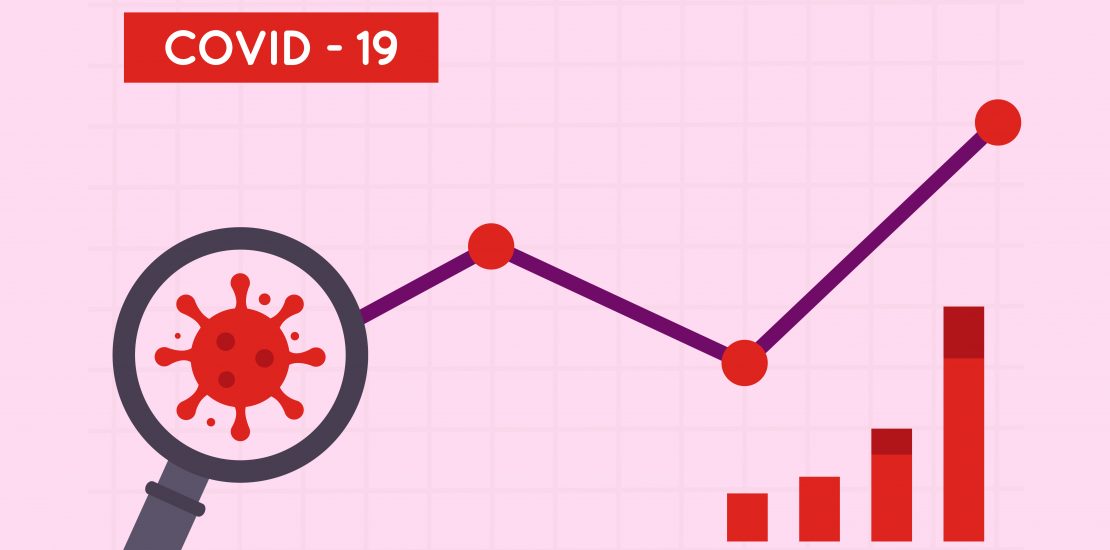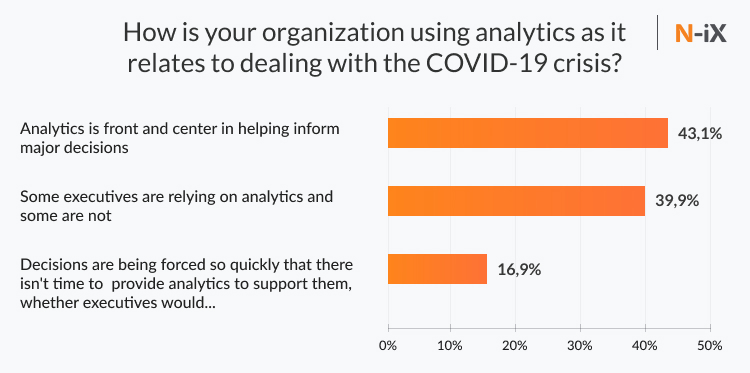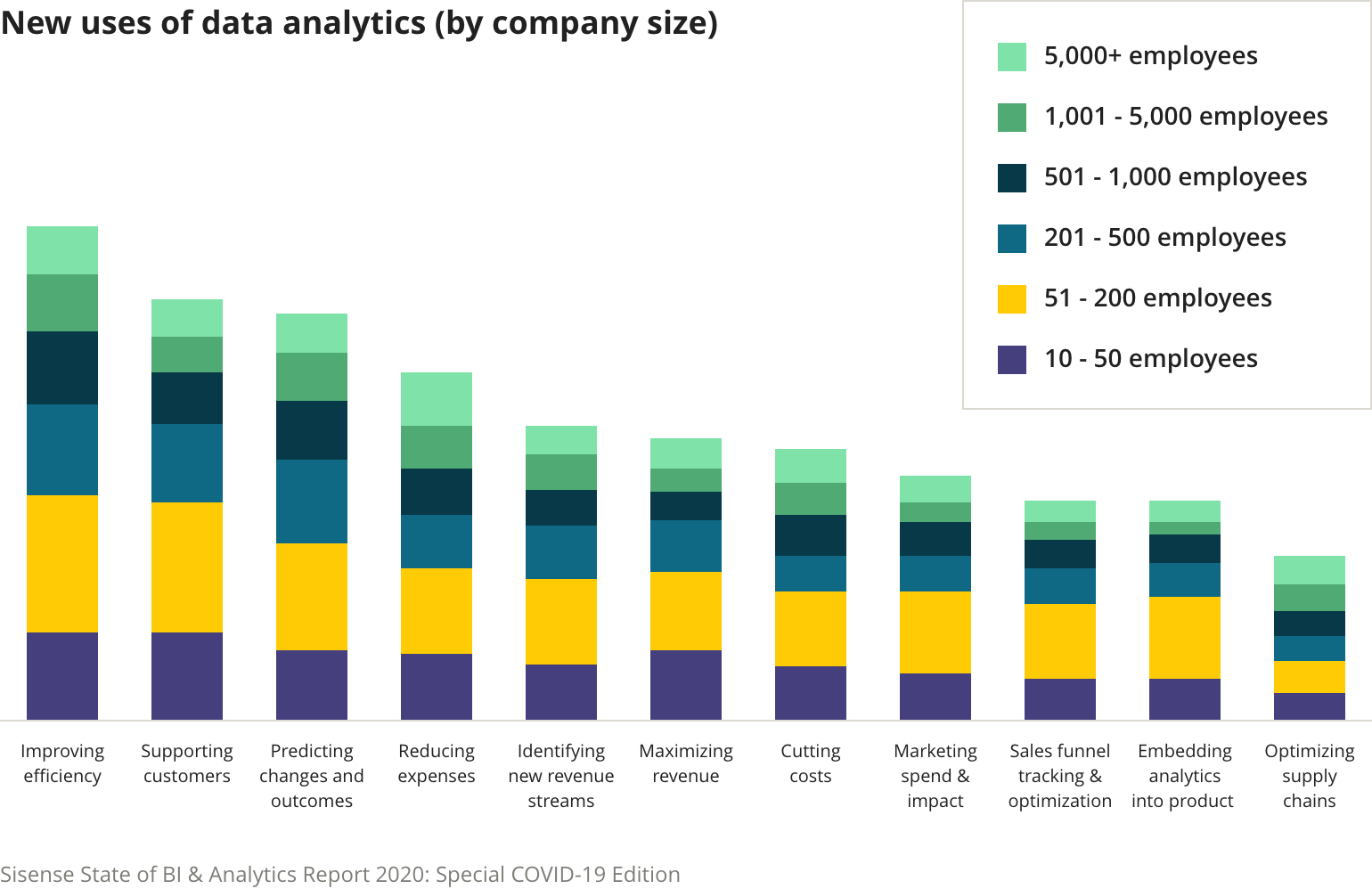How data & analytics can help organizations defy the Covid-19 pandemic
- October 2, 2020
- Posted by: Center of Innovation & Research
- Categories: Analytics, Big Data

The Covid-19 crisis is like no other. IMF projected the global growth to shrink by 4.9 percent in 2020 – deepest recession since the World War II. As the pandemic continues to unfold, the human suffering and economic impact, at the global scale, in the absence of a vaccine has reduced the optimism for a speedy economic recovery and increased uncertainty about the future.
This has introduced the toughest leadership challenge: how to navigate the unfurling complexity, manage headwinds and stay afloat, while vaccine is yet to be found and economies are still trembling. In these uncharted territories, where traditional revenue streams are drying up, it is not surprising that analytics has turned into the essential navigation tool for organizations.
Before the Covid-19 pandemic, leaders embraced analytics due to the potential economic value. While the adoption progressed, it took more time than expected owing to the cultural and organizational hurdles that leaders had to overcome. With business as usual upended by the pandemic, time is not the luxury that leaders possess today.
“Data-driven decision making has been a business goal for many years, but there is nothing like a global financial crisis to spur decisive, agile, and insightful insights to keep your business afloat. History has shown that times of crisis, whether financial, geo-political, or weather-related, advance the use of and reliance upon data and analytics.”
Harry Glaser, Chief business officer of Sisense
How organizations pulled off an effective Covid-19 response
Regardless of analytics maturity, some organizations quickly assembled cross-functional crisis response teams. These teams added new data streams, built new analytics solutions or redesigned existing ones to inform and guide decisions on business-critical issues. Some interesting examples are stated below:
- An automotive-parts supplier could rapidly adjust production capacity after a cross-functional team built a forecasting tool that predicts sales by market and vehicle type based on several variables/dimensions
- A Chinese car rental company whose revenue fell by 95 percent in February 2020, quickly invested on social listening and personalization. Based on insights that tech companies advised its employees to not use public transportation, they ran targeted campaigns and recovered 90 percent of its business
- Peloton, a seller of high-end fitness equipment, tapped on the growing need for workout from home; due to closure of public spaces and gyms. They quickly launched a streaming service and has enjoyed a rise in stock value
Organizations that pulled off an effective Covid-19 response, hinged their decisions on analytics. This quite is evident from the recent survey by Burtch Works and the International Institute of Analytics (IIA), where about 43 percent of the respondents stated that analytics is at the front and centre in guiding key business decisions in response to the Covid-19 crisis.
How to leverage analytics and tackle the crisis head on
In the current business climate, where the tides continue to shift, organizations must follow an agile operating model to build rapid analytics solutions tied to use cases with the greatest business impact in the short-term. By integrating operating model that instigates collective action across functions with the data & analytics strategy of the organization, tangible business outcomes can be delivered with every release. This use-case driven approach has the following benefits:
- Inform and guide key business decisions that help organizations to defy economic impact of the pandemic
- Gain business buy-in and organization-wide alignment and commitment to data & analytics strategy implementation
- Break down of siloed operations – roadblock to cultural change warranted by a data-driven enterprise
- Ability to identify and enhance internal capabilities and lay a solid data foundation in an iterative fashion
- Gradual shift towards data-driven decision making from top-down decision making
Conclusion
The pandemic has proven that organizations are more agile and outcome-driven than they imagined. Data-driven initiatives which used to take months were completed in weeks by teams of cross-functional experts who have never collaborated before. Leaders who heed to the lessons learnt during the pandemic would align business strategy with data & analytics strategy and build new pragmatic ways of working that ingrains pervasive use of data in business processes now and beyond.


